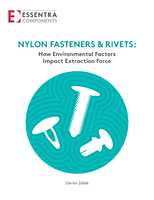ASTM Sustainability Standard develops invasive plant listings.
Press Release Summary:
Proposed standard STM WK40773, Practice for Invasive Plant Listing, will describe criteria and procedures by which to develop invasive plant list for specific geographic region and as foundation for creating such lists to support building codes and related applications. Being developed by Subcommittee E60.01 on Buildings and Construction, standard takes "an important step forward" in preventing the spread of invasive plants" according to E60.01 member Susan Gitlin.
Original Press Release:
Development of Invasive Plant Listings is Subject of Proposed New ASTM Sustainability Standard
W. CONSHOHOCKEN, Pa.– A proposed new ASTM standard will describe the criteria and procedures by which to develop an invasive plant list for a specific geographic region and will serve as a foundation for creating such lists to support building codes and related applications. ASTM WK40773, Practice for Invasive Plant Listing, is being developed by Subcommittee E60.01 on Buildings and Construction, part of ASTM International Committee E60 on Sustainability.
Susan Gitlin, Office of Sustainable Communities, U.S. Environmental Protection Agency, explains that, due to human intervention, invasive plants have moved from their native regions into new areas where they crowd out native vegetation. This invasion leads to an array of ecological and economic problems, including destruction of habitat essential to local wildlife; damage to water supplies, recreational resources and agriculture; and changes to soils, fire regimes and hydrological systems.
While the dangers of invasive plants are known, many are still widely sold and used because current laws prohibiting the distribution of noxious weeds cover only a small subset of invasive plants and because insufficient information is available at the local level to inform consumers about plants that are invasive to a particular region.
Model building codes and rating systems often contain sections that address the ecological damage related to invasive plants in landscaping. However, such code requirements are dependent on the existence of a valid list of invasive plants for the region in which a proposed building is to be located. The proposed standard will be an important step in the creation of such lists.
“Many organizations around the world are combating invasive plants and associated problems, and green building and landscaping programs are beginning to discourage the use of these plants, but there is as of yet no widely recognized science-based protocol that creates a common basis for listing what is and is not invasive to a given area,” says Gitlin, an E60.01 member. “ASTM WK40773 aims to address this gap and, in doing so, has taken an important step forward in preventing the spread of invasive plants.”
So far, the task group developing ASTM WK40773 has focused on profiling the criteria and procedures currently used by organizations dealing with invasive plants throughout the United States, particularly invasive plant councils that are active in more than 30 states. Systems used by these organizations, along with those used by the U.S. Department of Agriculture’s Animal and Plant Health Inspection Service, will provide a foundation to assess best practices in developing lists that are science-based, transparent and supported by a range of stakeholders.
Once it has been approved, ASTM WK40773 will be used by state and local jurisdictions, regulatory agencies, environmental organizations and building code developers, among other entities. Potential uses include creating invasive plant lists at a community level, refining lists of plants that are regulated at the state and federal level and educating environmental professionals.
To purchase ASTM standards, visit www.astm.org and search by the standard designation, or contact ASTM Customer Relations (phone: 877-909-ASTM; sales@astm.org).
ASTM International is one of the largest international standards development and delivery systems in the world. ASTM International meets the World Trade Organization (WTO) principles for the development of international standards: coherence, consensus, development dimension, effectiveness, impartiality, openness, relevance and transparency. ASTM standards are accepted and used in research and development, product testing, quality systems and commercial transactions.
For more news in this sector, visit www.astm.org/sn-environmental or follow us on Twitter @ASTMEnvironment.
ASTM Committee E60 Next Meeting: Oct. 22-24, 2013, October Committee Week, Jacksonville, Fla.
Technical Contact:
Susan Gitlin
U.S. Environmental Protection Agency
Washington, D.C.
Phone: 202-566-9760
gitlin.susan@epa.gov
ASTM Staff Contact:
Stephen Mawn
Phone: 610-832-9726
smawn@astm.org
ASTM PR Contact:
Barbara Schindler
Phone: 610-832-9603
bschindl@astm.org




